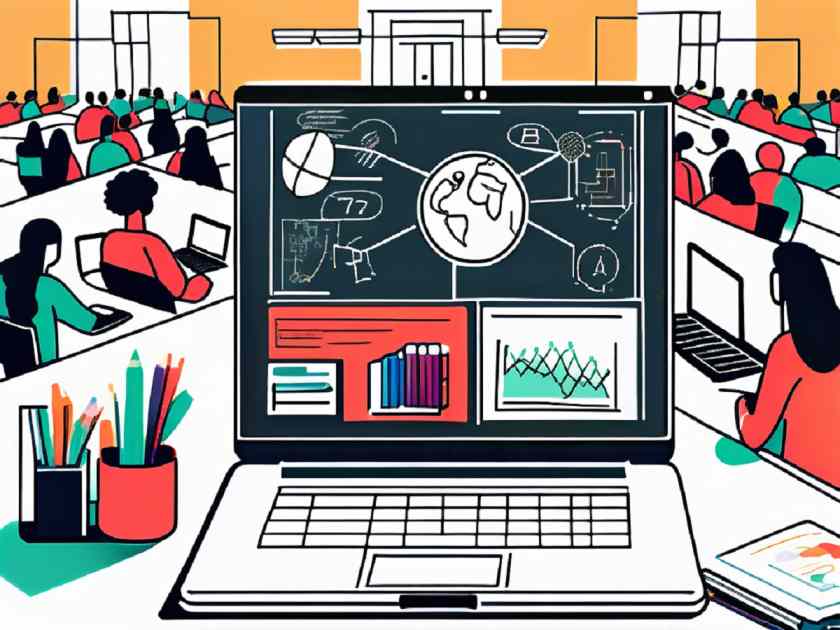
Blackboard Texas Tech: Enhancing the Learning Experience
In the digital age, the educational landscape has transformed significantly, and platforms like Blackboard have played a crucial role in this evolution. At Texas Tech University, Blackboard serves as an essential tool that enhances learning experiences for students and instructors alike. This article explores various facets of Blackboard, from its features to its impact on student engagement and performance.
Understanding the Features of Blackboard at Texas Tech
Blackboard at Texas Tech offers a range of features designed to facilitate effective teaching and learning. One of the platform’s key components is its user-friendly interface, which allows students and instructors to navigate seamlessly through various courses.
In addition to ease of use, Blackboard provides tools for course content management, assessment, and communication. Instructors can easily upload course materials, create assignments, and facilitate discussions all within the same platform. Some notable features include:
- Grade Center: This tool allows instructors to manage student grades efficiently, providing instant feedback and tracking performance.
- Discussion Boards: Facilitating asynchronous discussions, this feature encourages students to engage with course material and collaborate with peers.
- Integrated Calendar: Keeping track of assignments and upcoming events is simplified with an integrated calendar that syncs all course deadlines.
Moreover, Blackboard also supports a variety of multimedia content, enabling instructors to enhance their courses with videos, podcasts, and interactive simulations. This multimedia capability not only enriches the learning experience but also caters to different learning styles, ensuring that all students can engage with the material effectively. Instructors can embed these resources directly into their course modules, making it easy for students to access everything they need in one place.
Another significant feature of Blackboard is its mobile accessibility. With the Blackboard app, students can access course materials, participate in discussions, and submit assignments right from their smartphones or tablets. This flexibility allows for learning on-the-go, making it easier for students to stay connected with their coursework, even when they are away from their computers. The app also sends notifications for important updates, ensuring that students never miss a deadline or announcement, which is particularly beneficial in today’s fast-paced academic environment.
How Blackboard Facilitates Collaborative Learning
Collaboration among students is vital for a comprehensive learning experience, and Blackboard excels in this area. The platform offers several tools that cultivate a collaborative environment:

Through the use of discussion boards, group projects can be executed online, allowing students to share ideas and materials, even if they are not physically in the same location. This flexibility encourages diverse perspectives and enhances the overall learning process. Students can engage in real-time discussions or contribute asynchronously, accommodating different schedules and learning paces. This adaptability not only promotes inclusivity but also empowers students to take ownership of their learning journey, as they can contribute to discussions when they feel most prepared.
Moreover, features like group assignments and peer review enable students to learn from each other, providing valuable insights that enrich their understanding of the subject matter. The collaborative tools within Blackboard foster a sense of community among users, helping to combat feelings of isolation often experienced in online learning environments. By allowing students to form study groups and collaborate on projects, Blackboard not only enhances academic performance but also builds essential soft skills such as teamwork, communication, and conflict resolution. These skills are increasingly important in today’s workforce, where collaboration across diverse teams is the norm.
Additionally, Blackboard’s integration with various multimedia tools allows students to incorporate different formats into their collaborative efforts. For instance, they can use video conferencing to hold virtual meetings, share presentations, or even create podcasts as part of their group projects. This multimedia approach caters to various learning styles and keeps students engaged, making the collaborative process not just educational but also enjoyable. Furthermore, instructors can monitor group interactions and provide timely feedback, ensuring that all voices are heard and that the collaborative experience is productive and meaningful.
The Role of Blackboard in Online Course Management
Managing online courses can be a daunting task for instructors, but Blackboard streamlines this process significantly. The platform offers features that simplify course organization, grading, and communication.
Instructors have the ability to create structured learning paths, ensuring that students progress through the course material systematically. They can also set deadlines, manage submissions, and provide personalized feedback—all of which enhance the instructional experience.
The integration of video conferencing tools further enhances online course management. Instructors can host live sessions, conduct office hours, and provide real-time interactions that mirror traditional classroom environments, thereby increasing student engagement.
Additionally, Blackboard’s robust analytics tools empower educators to monitor student performance closely. By analyzing data on student engagement and assignment completion rates, instructors can identify at-risk students and intervene proactively. This data-driven approach not only helps in tailoring instructional strategies but also fosters a more supportive learning environment where students feel valued and understood.
Moreover, Blackboard facilitates collaboration among students through discussion boards and group projects. These features encourage peer-to-peer interaction, allowing students to share insights and learn from one another. The ability to collaborate in a virtual space mimics the dynamics of a physical classroom, promoting a sense of community that is often challenging to achieve in online settings. As students engage in discussions and group activities, they develop critical thinking and teamwork skills that are essential for their future careers.
Enhancing Student Engagement Through Interactive Tools
Student engagement is a critical factor for successful learning outcomes, and Blackboard offers numerous interactive tools to keep students motivated and involved. One integral feature is the ability to create quizzes and polls that provide immediate feedback to students. This instant feedback loop allows learners to identify their strengths and weaknesses in real-time, fostering a more personalized learning experience. By understanding where they excel and where they need improvement, students can adjust their study habits accordingly, ultimately leading to a deeper comprehension of the material.
Gamification elements, such as badges and leaderboards, can also be integrated into courses, incentivizing participation and performance. These elements not only make learning more enjoyable but also instill a sense of healthy competition among peers. When students see their names climbing up a leaderboard or receive badges for completing tasks, it can significantly boost their motivation to engage with the course content. Additionally, incorporating storytelling elements into these gamified experiences can create a more immersive learning environment, allowing students to feel as though they are part of a larger narrative.
Furthermore, multimedia content such as videos, podcasts, and interactive simulations can be embedded within course materials, catering to various learning styles. For instance, visual learners may benefit from engaging video tutorials, while auditory learners might prefer podcasts that delve into complex topics. Interactive simulations can provide hands-on experiences that are particularly beneficial in fields such as science and engineering, where practical application of theory is crucial. By diversifying the types of content available, educators can better meet the needs of all students, ensuring that everyone has the opportunity to thrive.
These interactive tools not only enhance engagement but also encourage students to take ownership of their learning, leading to improved academic performance. When students are actively involved in their education, they are more likely to develop critical thinking and problem-solving skills. Moreover, fostering a collaborative environment through discussion boards and group projects can further enhance engagement, as students learn to communicate effectively and work together towards common goals. This collaborative spirit is essential in preparing students for real-world challenges, where teamwork and effective communication are paramount.
Navigating Blackboard: A Guide for New Users
For new users, navigating Blackboard can initially seem overwhelming. However, the platform offers several resources to assist them in acclimating to its features. Texas Tech provides orientation sessions and workshops designed to familiarize students and instructors with Blackboard functionalities.
Additionally, the Blackboard Help Center is accessible to all users, offering guides, video tutorials, and FAQs for troubleshooting common issues. Navigating the dashboard, customizing settings, and utilizing tools effectively are just a few of the topics that these resources cover.
Engaging with these materials can help new users maximize their Blackboard experience, promoting a smoother transition into the digital learning environment. Furthermore, users can take advantage of the community forums available within Blackboard, where they can connect with fellow students and instructors. These forums serve as a valuable space for sharing tips, asking questions, and discussing best practices for using the platform. By participating in these discussions, users can gain insights from others’ experiences, which can enhance their understanding and usage of Blackboard.
Moreover, Blackboard frequently updates its features and tools to improve user experience and accessibility. Staying informed about these updates is crucial for new users, as it allows them to take full advantage of the latest functionalities. Texas Tech often sends out newsletters and notifications about new features, which can include anything from enhanced grading tools to new collaboration options. By keeping an eye on these communications, users can ensure they are leveraging all that Blackboard has to offer, ultimately enriching their educational journey.
Integrating Multimedia Resources into Your Courses
The incorporation of multimedia resources into courses is a hallmark of effective teaching in the modern age. Blackboard supports various formats, allowing instructors to upload videos, audio files, and interactive presentations. This diverse range of content not only enriches the curriculum but also caters to various learning preferences among students.
For instance, video lectures can be particularly effective in conveying complex ideas, while podcasts may suit auditory learners better. By providing varied resources, instructors can ensure that all students have access to the tools they need to succeed.
Moreover, the ability to create virtual environments, such as simulations or interactive labs, offers students hands-on experience that traditional methods cannot replicate, enhancing the overall learning experience. These immersive experiences can lead to deeper understanding and retention of material, as students engage with content in a more meaningful way. For example, a biology course might include a virtual dissection lab, allowing students to explore anatomical structures in a risk-free environment, which can be particularly beneficial for those who may not have access to physical lab facilities.
Additionally, the integration of multimedia resources fosters collaboration among students. Tools such as discussion boards and group projects can be enhanced with multimedia elements, encouraging students to share videos, images, and other digital content. This not only enriches the discussion but also allows students to learn from one another’s perspectives and insights. Furthermore, the use of multimedia can help bridge the gap for students who may struggle with traditional text-based resources, providing alternative ways to engage with the material and express their understanding. By embracing these innovative teaching methods, educators can create a dynamic and inclusive learning environment that prepares students for the diverse challenges of the modern world.
The Impact of Blackboard on Student Performance
The implementation of Blackboard at Texas Tech has shown a positive impact on student performance. Research indicates that students who engage with digital platforms, such as Blackboard, often exhibit improved academic results compared to those who rely solely on traditional methods.

This improvement can be attributed to several factors, including increased accessibility to course materials, the ability to track performance through the Grade Center, and enhanced communication with instructors and peers. Students are more likely to stay engaged and motivated when they have immediate access to feedback and resources.
Furthermore, the platform’s analytics tools allow instructors to monitor student engagement and performance trends, enabling them to make data-informed decisions to enhance course effectiveness and support student learning.
In addition to these advantages, Blackboard fosters a collaborative learning environment by providing discussion boards and group project spaces. These features encourage students to interact with one another, share ideas, and work together on assignments, which can lead to a deeper understanding of the material. The ability to collaborate online also prepares students for the increasingly digital nature of the modern workplace, where teamwork often occurs remotely.
Moreover, Blackboard’s integration with various multimedia resources, such as videos, podcasts, and interactive simulations, enriches the learning experience. This variety of content caters to different learning styles, allowing students to engage with the material in ways that resonate with them. As a result, students not only grasp complex concepts more effectively but also develop critical thinking skills that are essential for their academic and professional futures.
Best Practices for Instructors Using Blackboard
To maximize the benefits of Blackboard, instructors should consider implementing best practices in their teaching approach. Some recommended strategies include:
- Regularly updating course content to keep it relevant and engaging.
- Utilizing diverse assessment methods to cater to various learning styles and preferences.
- Encouraging open communication through discussion boards and direct messaging.
- Offering timely feedback to guide student progress effectively.
- Leveraging analytics to identify students who may need additional support and intervening promptly.
By adopting these practices, instructors can create a more dynamic and supportive learning environment that fosters academic success.
Future Developments: What’s Next for Blackboard at Texas Tech
The future of Blackboard at Texas Tech looks promising with ongoing updates and developments aimed at enhancing user experience. The university is committed to investing in innovative technologies that can further streamline online learning.
Potential future updates may include improved mobile accessibility, advanced analytics capabilities, and integrations with emerging educational technologies. These enhancements are likely to make the platform even more intuitive and effective for both students and instructors.
Moreover, as educational needs evolve, Texas Tech aims to stay ahead of the curve by continuously soliciting feedback from users to tailor the Blackboard experience to better meet the needs of its community.
Student Testimonials: Experiences with Blackboard in the Classroom
Many students at Texas Tech have shared positive experiences regarding their use of Blackboard. Feedback highlights the platform’s user-friendly design and the accessibility of resources. Students appreciate the ease with which they can find course materials and submit assignments.

Additionally, collaboration features such as group discussions and peer reviews have been praised for fostering a sense of community among peers. Many students report feeling more connected and engaged with their courses thanks to the interactive elements offered by Blackboard.
One student noted, “Blackboard made it easy to stay organized. The notifications helped me keep track of deadlines and the discussion boards kept our class discussions alive, even outside of lectures.”
Conclusion
In conclusion, Blackboard serves as a dynamic and comprehensive tool that enhances the learning experience at Texas Tech University. Its diverse features promote collaboration, engagement, and effective course management, contributing positively to both student and instructor experiences.
As the educational landscape continues to evolve, platforms like Blackboard are essential in shaping the future of learning. By leveraging the power of technology, Texas Tech ensures that its students are equipped with the resources and support needed to thrive academically.
FAQs
Here are some frequently asked questions regarding Blackboard at Texas Tech:
Students can reach out to the Blackboard Help Center or their technical support team for assistance.
Once logged in, navigate to the “My Courses” section to view all enrolled courses and available materials.
Yes, Blackboard offers a mobile app that allows you to access course materials and participate in discussions on-the-go.
Yes, Texas Tech provides training sessions and online resources to help new users familiarize themselves with Blackboard.




